THE SEVEN SISTERS OF LINCOLN PLACE (1906)
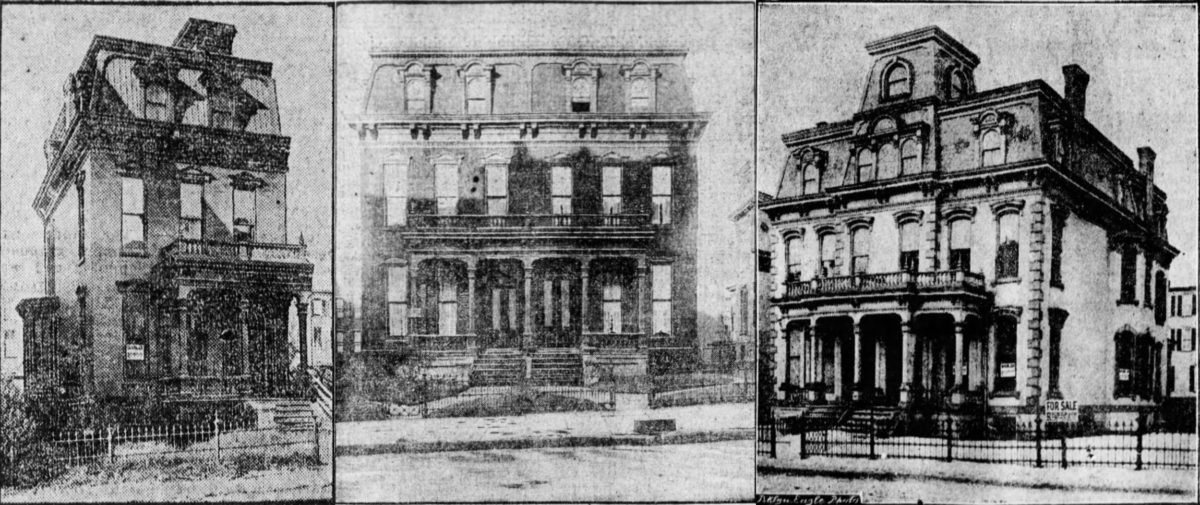
Brownstone Detectives investigates the history of our clients’ homes.
The story you are about to read was composed from research conducted in the course of one of those investigations.
Do you know the history of YOUR house?
********************************************************************************************************************************
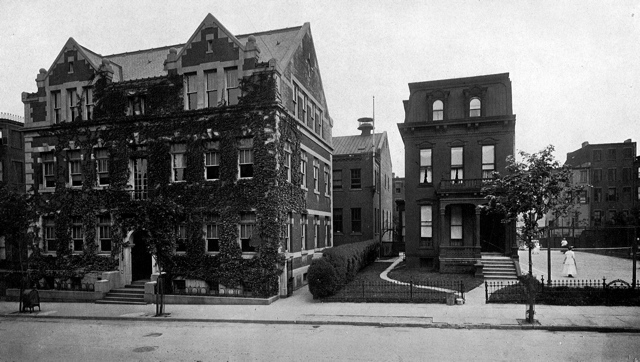
If the Big Bad Wolf had had anything to do with it, he would have always voted for the predictability of a good detached wood-frame villa.
It had gotten him far in his day and, what’s more, it had gotten him fed.
But it wasn’t the Three Little Pigs’ hairy nemesis that was making housing decisions in Park Slope, Brooklyn around the turn of the last century.
Rather, it was the Pigs, themselves, who wanted more modern, sturdier, up-to-date brick and masonry structures.
THE DEATH OF VILLAS
In early 20th century Brooklyn, a combination of home buyers’ indicators was guiding downward the valuation of older Victorian-era properties.
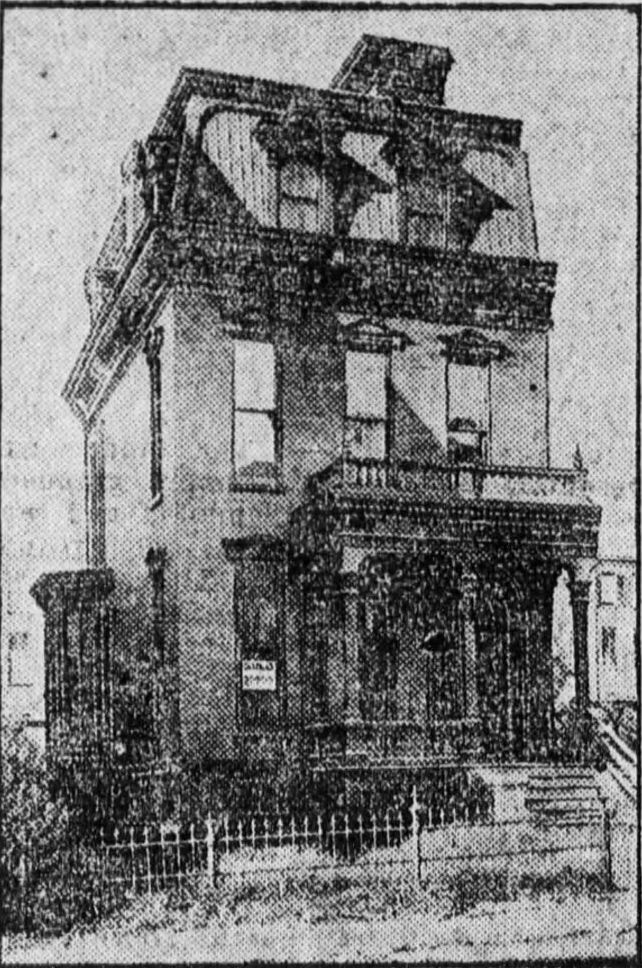
First of all, impacting the long-term downward trajectory, there were the laws promoting fire zones that prevented structures built with wood frames from being constructed going forward. There was also their susceptibility to fire (which prompted these fire zones in the first place). And there was their age – a large number of free-standing villas still around in Brooklyn at the time were at least 25 years old – most others were many years older that that.
Most visible, however, were the tastes of the early 20th century home buyers which leaned heavily in the direction of sturdy masonry buildings.
The variable, however, which had the largest impact of the disappearance of these free-standing villas, was the fact that the closer to Manhattan that these Brooklyn properties sat, the higher their land values were. And as Brooklyn had become the bedroom community for Manhattan, land became dearer and dearer.
Specifically, the luxury of these villas’ large yards were being eyed for their potential for living space, which forced builders to utilize every square inch available on any given lot to the structure itself.
Thus, these detached villas, many sporting wood frames sheathed in stucco, had long been eclipsed by their more severe and sturdy masonry counterparts.
And by 1906, the slow descent in popularity of these wood-frame detached houses – like the wolf catching the scent of three little pigs in a wood frame house – was just beginning to be noticed.
Especially in Park Slope – on Lincoln Place.
SEVEN VILLAS FOR SEVEN SISTERS
In 1906, a story in the Brooklyn Daily Eagle noted how a “Row of Detached Houses Called ‘Seven Sisters’ (Was) Being Gradually Acquired for Commercial Purposes.
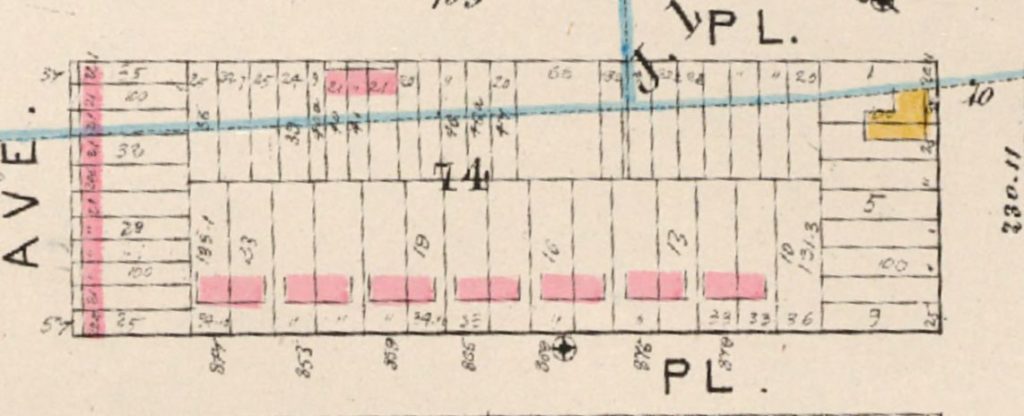
“The block on the north side of Lincoln place, between Seventh and Eighth avenues,” noted the paper, “is rapidly undergoing a change that will forever alter the distinctive appearance which it has borne for a generation.
“On this side of the street, occupying nearly the entire block, is a row of houses known as the ‘Seven Sisters.’ The houses were built a little more than twenty years ago and are about the only structures of that class still standing on the Park Slope.”
Likely built closer to the early 1870s, the spacious 22′ X 62′ houses, sitting on expansive 33′ X 131′ lots – and some with detached carriage houses – may have been put up by more than one builder. Before the street renumbering took place, the villas each had a number in the “800”‘s.
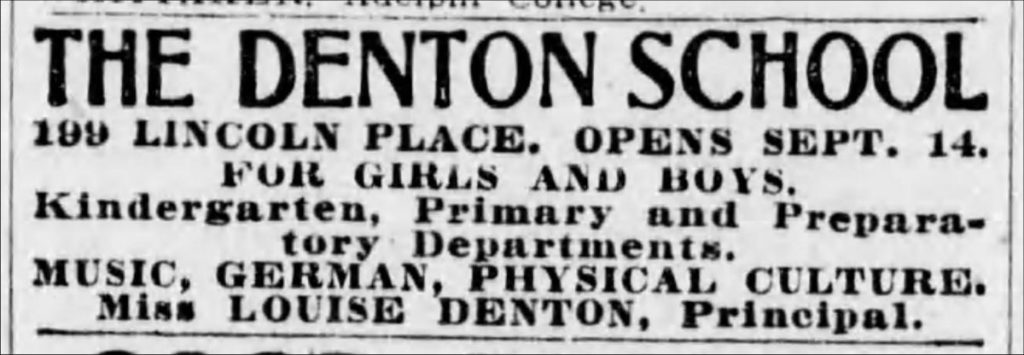
Throughout the 1890s and 1900s, many of the buildings – one by one – became either a boarding house, a church, or the location of a school of some sort, the most famous being the Berkeley Institute.
The Berkeley Institute initially took up Nos. 183 through 193, and was likely the educational institution that attracted all of the other educational establishments to the block.
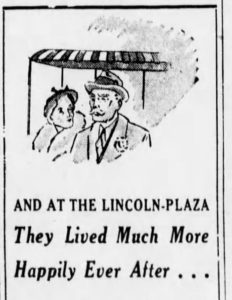
No. 193 became the Regents’ School; No. 199 became the Christian Scientists Church, as well as the Denton School; No. 225 was – for a while – Miss Gordon’s Classes for Girls, as well as the C. H. Rivers & Son School for Dancing, Regents’ Institute; No. 223 housed the Lincoln Art Rooms; and No. 231 became Mrs. Leonora Obendorf’s Elocution School.
POSTSCRIPT
As the early part of the 20th century passed into the 1910s, it was becoming more and more obvious that the use of these structure as educational facilities had been temporary. The houses, as beautiful as they were, were already anachronisms; with their porches and lawns and Mansard roofs, they belonged to another era. More importantly they were also standing in the way of progress, preventing the properties they sat upon from being used more efficiently – and more economically.
They would go down one by one, the victims of real estate devlopers that would construct apartment houses on their lands with names like The Lincoln-Plaza, 209 Lincoln Place, and 225 Lincoln Place.
The physical demise of these ancient villas began with the Berkeley Institution razing one to build a more modern school building. Another villa, No. 223-225, closer to Eighth Avenue, was destroyed by fire around 1905.
With the new hi-rise fireproof apartment buildings taking the places of the Seven Sisters, the Three Little Pigs would feel more safe and secure against the Big Bad Wolf.
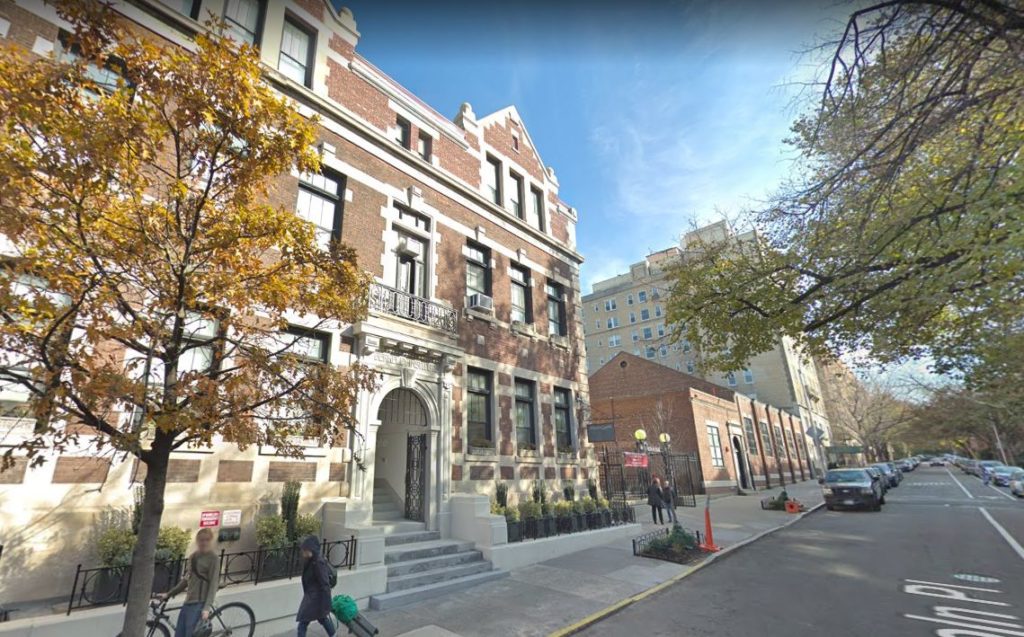
———————————————————————————————————————–
 Brownstone Detectives is an historic property research agency. Our mission is to document and save the histories of our clients’ homes. From our research, we produce our celebrated House History Books and House History Reports. Contact us today to begin discovering the history of your home.
Brownstone Detectives is an historic property research agency. Our mission is to document and save the histories of our clients’ homes. From our research, we produce our celebrated House History Books and House History Reports. Contact us today to begin discovering the history of your home.